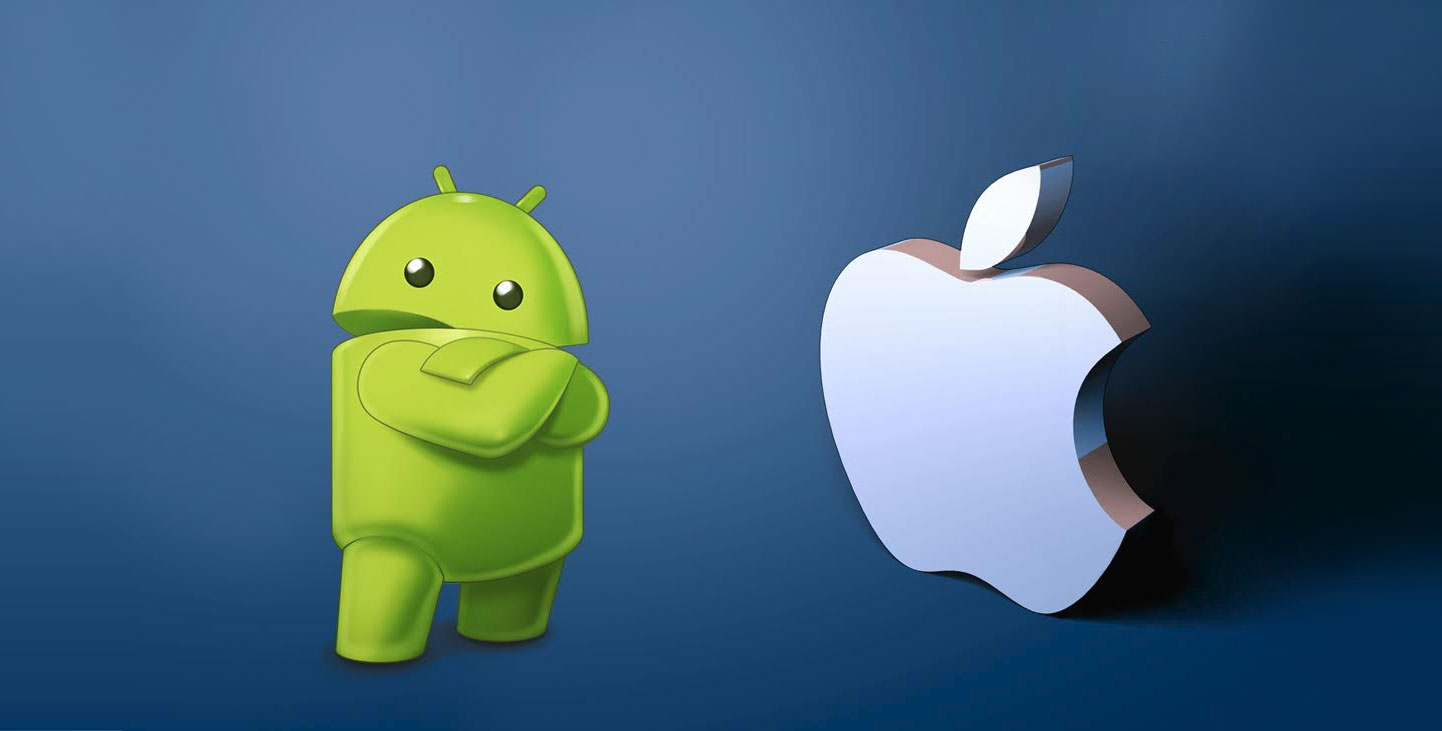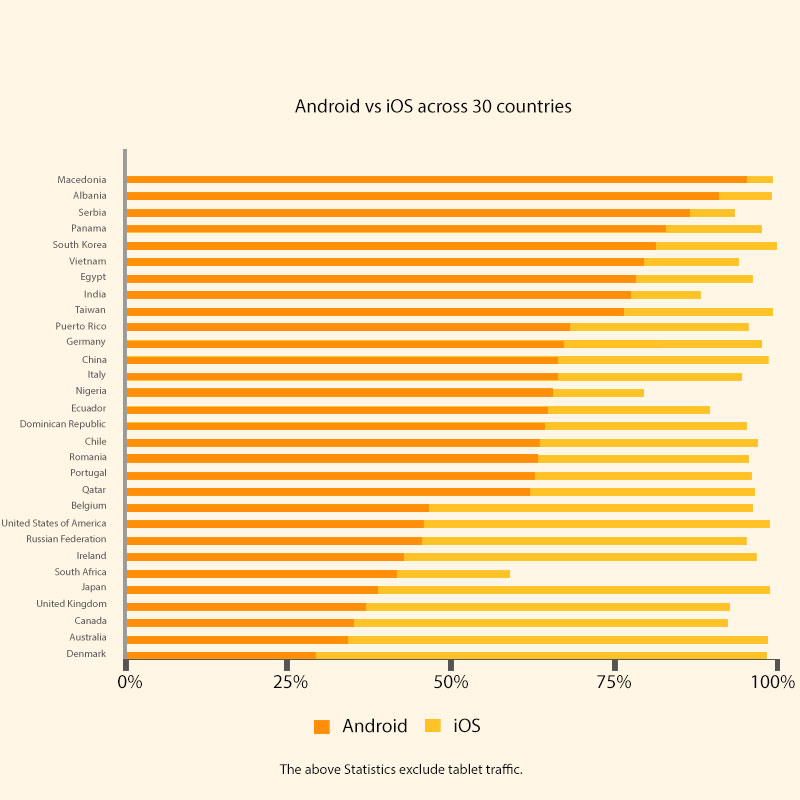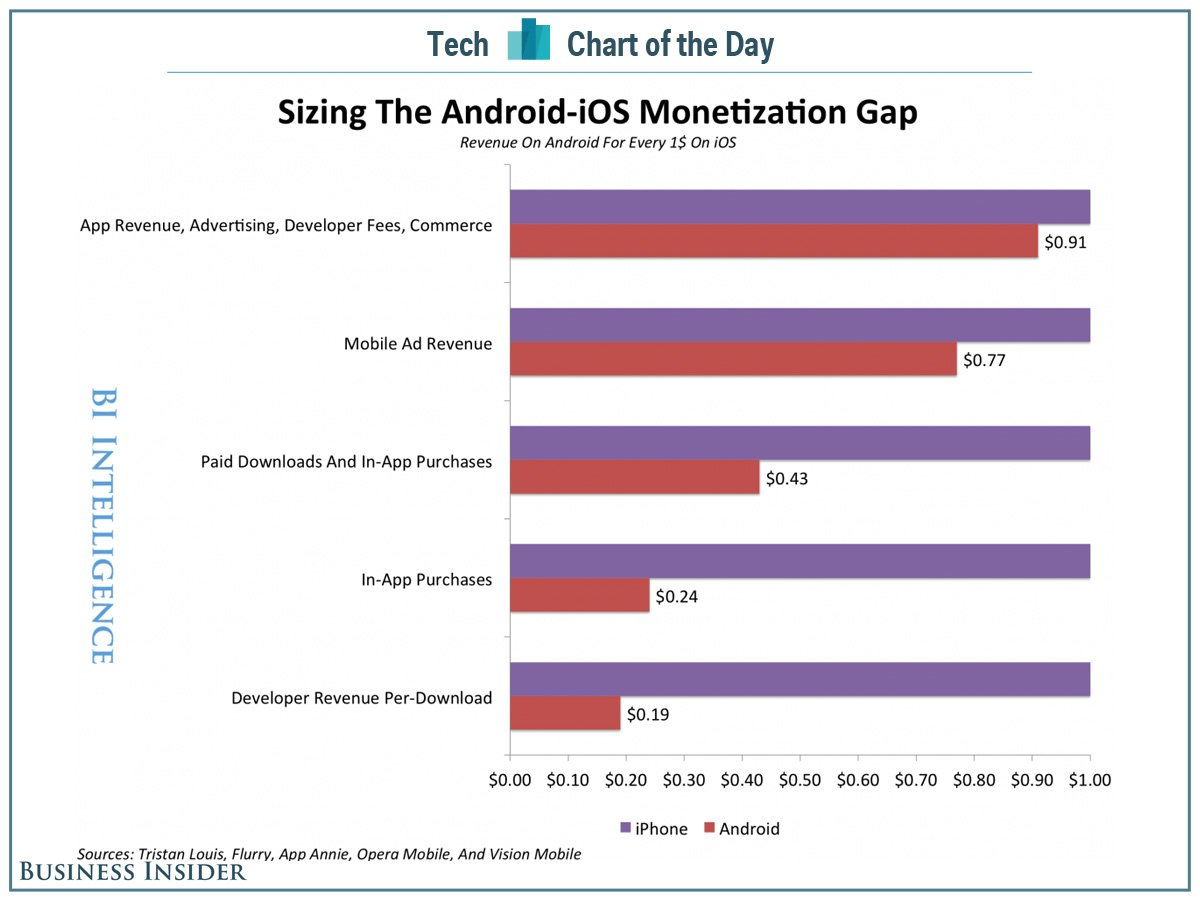
By the fall of 2016, Gartner estimates the technology investment in the space of communication services to reach $1, 400, 000 trillion. Mobile apps play a key role in providing the user-interface for the communication that is pivotal to every business operation from manufacturing to sales and marketing, to customer service.
Well, considering the dominance of Android and iOS in the mobile operating system market (both eat up 99.3% of the chunk), any Tom, Dick and Harry can advocate for mobile apps. But being a business head or decision maker, your job is to ascertain that the technology investment brings the best return. With Root Info Solutions, read Difference Between Android and iOS Mobile App Development in the context of ROI.
Market Penetration: Android Vs iOS
Clearly, here Android has an upper hand. If we go by the 2016Q2 Report of IDC, 87.6% of the mobile operating system market is covered by Android alone. With an Android app, your business is likely to reach to 2.45 billion users (the number of smartphone users equals 2.8 billion). So with Android app development, it's obvious that your brand will get a better penetration into the market. Does it mean to ignore the remaining 0.35 billion consumers, of whom the majority is of iOS users? Well, apparently, it may bear some logic but taking a deeper dig, you will drop the thought. Take a look at the geographical dispersal of Android and iOS.

Image Courtesy: Mobiforge
Picture: 1
So if your business is in Macedonia or similar areas where Android users are in majority you can take a risk for the time being to ignore investing in iOS app development, but what if you are catering to consumers in Denmark, Australia, UK and other similar ones, where the situation is just opposite? Clearly, you can?t afford to do so. Thus, the demographics of the target audience is a critical factor to consider while investing in mobile app development. Sometimes, you may find yourself trapped in catch 22 situation as you can?t ignore either. You have to get app built for Android and iOS both users.
Socio-Economic Split: Android Vs iOS
For long there has been a perception that Android is for the poor while iOS for the rich. The vast difference between the pricing of both device type is enough to help locate their respective stronghold areas in any region.
Here is an interesting survey in this regard. In 2014, Business Insider, monitoring the origin of tweets in New York metropolis, found that tweets coming from Manhattan (where median income is $67,000 a year) were sent using iPhones while those from Newark( median income $17,000 a year) using Android phones.
This difference can be witnessed over larger geographies like country, region and continent as well, as we have checked in the picture 1. iPhone dominates in countries with higher per capita income while Android does the same in the reverse situation. Interpretation? Business heads have to keep in mind the socio-economic status of the target audience. For instance, if you are into the real-estate industry, you are likely to get a better response from your iOS app than the Android one. I would beg apology from Android users. I didn't want to say that Android users can't afford to buy a home or ranch.
Conversion Ratio: Android Vs iOS
The number of app downloads and in-app pageviews may go higher at times but not the conversion. Experts and their stats often give iOS an edge over Android in the battle of conversion and app monetization. Refer to the last year's Black Friday sale stats across Android and iOS.

Image Courtesy: Business Insider
Picture: 2
What does it mean in layman term? The probability of an in-app purchase is higher on iOS than on Android. The reason they cite is again the same: iOS users are affluent and they are likely to make the purchase. However, at Root Info Solutions, our Android app developers are not ready to buy this claim. We believe that adhering to the best Android app development practices, companies can help their clients to achieve higher conversion rate burying issues like shopping cart abandonment, app abandonment, and customer dissatisfaction.











